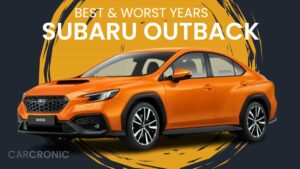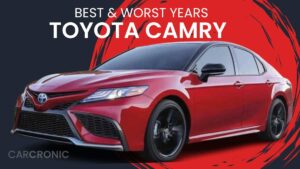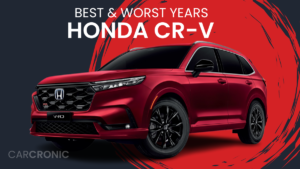We’ve rated the entire range of Hyundai Santa Fe vehicles from every generation to help you avoid selecting the worst Hyundai Santa Fe models and select the most desirable one.
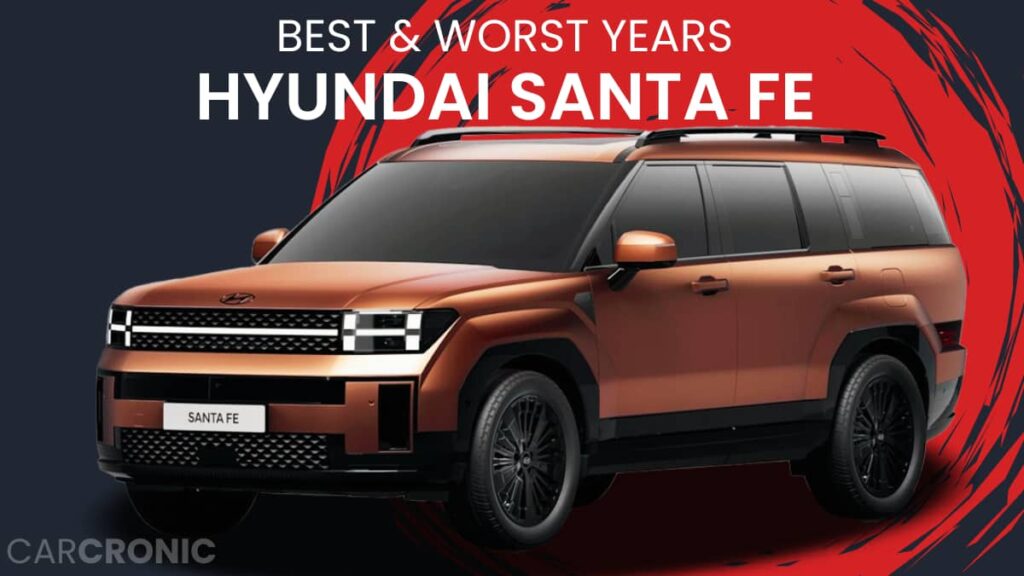
In this article I’ll look at every one of the Hyundai Santa Fe generations, providing Santa Fe’s best years to purchase and the most shady Hyundai Santa Fe years to stay clear of.
Using reliable sources such as NHTSA, VehicleHistory and a variety of reviews from consumers, the guide compiles and displays years of data that highlight Hyundai Santa Fe’s annual reliability.
We’ll explore Hyundai Santa Fe’s frequent problems important recalls, as well as outstanding features, by analyzing each of the best or worst season for Hyundai Santa Fe.
Let’s get started.
Hyundai Santa Fe Generations
The Hyundai Santa Fe has undergone many generations, adapting to the changing needs of the market. The first generation, which was introduced in 2001, created its niche within the mid-size SUV market thanks to its sturdy design and reliability.
As the vehicle advanced into its 2nd generation of 2007, the model introduced improvement in fuel efficiency and new safety features that affirmed its reputation as a family-friendly vehicle.
The third generation of Santa Fe that was introduced 2013 we saw the shift towards an elegant and contemporary exterior, paired with modern interior features. This change put Santa Fe as a formidable rival in its class.
The most recent Fourth-generation Santa Fe debuted in 2018 is still awe-inspiring with its stylish design and cutting-edge technology which enhance the driving experience.
With each new version, Santa Fe delivers superb value and performance to those who want an extraordinary mid-sized SUV experience.
| Generation | Years |
| 1st generation (SM) | 2001 to 2006 |
| 2nd Generation (CM) | 2007 to 2012 |
| 3rd generation (NC) | 2013 to 2018 |
| 4th generation (TM) | 2019 to Present |
Hyundai Santa Fe Best, Neutral, and Worst Years
In determining our rankings and categorizings for Hyundai Santa Fe’s worst and best seasons, we look at a range of aspects, which include but are not only
- Reliability of the owner (surveys)
- Costs of annual maintenance
- Ratings for safety
- Consumer Reports score on reliability
- Consumer Reports Owner satisfaction scores
- NHTSA recalls, investigates and also complaints
- Edmunds owner reviews
- JD Power owner ratings
- Kelley’s Blue Book (KBB) owner ratings
- Owner ratings for VehicleHistory
- Cars.com owner reviews
The graph will be shown below to show the ratings consolidated from the sources listed above.
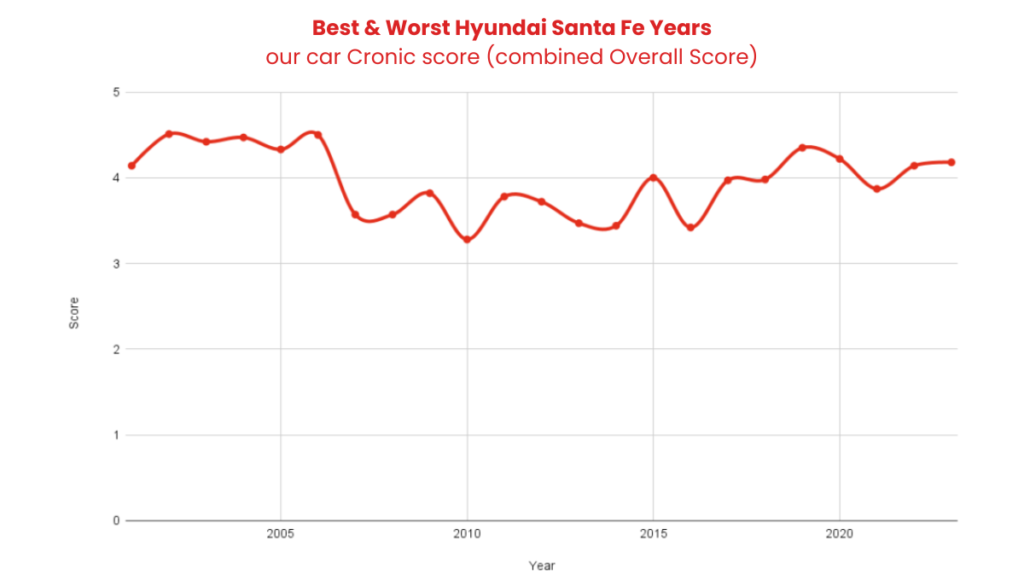
A second table of categorization will help you determine which years are the most outstanding as well as neutral. The table also reveals the worst years in each generation.
| Generation | Best Years | Neutral Years | Worst Years |
| 1st generation (SM) | 2006 | 2004 2005 | 2001 2002 2003 |
| Second generation (CM) | 2011 2012 | N/A | 2007 2008 2009 2010 |
| 3rd generation (NC) | 2015 2016 2018 | N/A | 2013 2014 2017 |
| 4th generation (TM) | 2019 2020 2023 | N/A | 2021 2022 |
Neutral Years are defined as years of model that don’t sparkle or show any significant negatives, but offer a good balance of satisfaction and reliability.
Being aware of how certain aspects like NHTSA recalls in inverse relation to the reliability score of a car is crucial, and often indicates general issues.
Let’s take a look at the top, neutral, and the worst Hyundai Santa Fe years.
Best & Worst Hyundai Santa Fe Years 1st Generation (2001-2006)
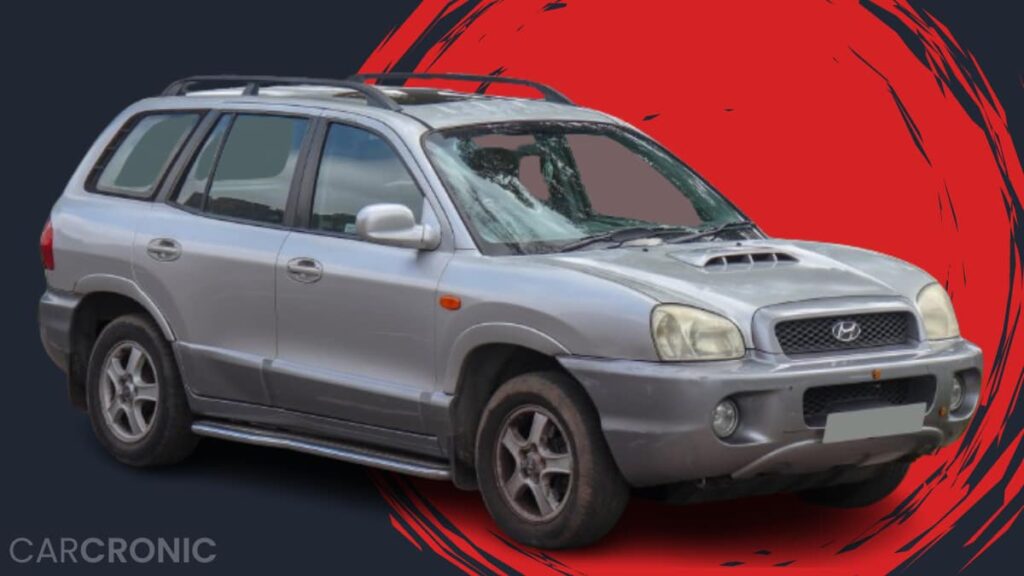
It was 2002. Hyundai Santa Fe model is frequently called the best year for the first generation due to its exceptional combination of features and reliability.
The model year of 2008 marked the beginning of a new era for Hyundai, which saw a significant improvement in manufacturing quality and improved driving the dynamics.
Best Year For Hyundai Santa Fe: 2006
The year 2006 was among the most successful times for Hyundai Santa Fe in the 1st generation. It is regarded as the top of the first generation, with a more refined design and improved performance.
Its powerful 3.5L V6 engine produced an amazing power and fuel efficiency combination which set it apart from the previous models.
The model year of this year saw major changes to its interior with improved quality of materials and modern features that provided the most comfortable driving experience.
The Santa Fe of 2006 Santa Fe also received high reviews for its reliability and endurance and makes it an excellent option for those looking for long-term value. In 2001, the Hyundai Santa Fe was plagued by a number of problems that slowed the overall quality of its appeal.
This first model was plagued with issues with reliability and the interior was less polished in comparison to the later models within the line-up. The foundation of future success was the 2001 Santa Fe, failed to completely fulfill Hyundai’s potential in the moment.
Neutral Years: 2004, 2005
The Neutral years of 2004 and 2005 introduced to the market Hyundai Santa Fe equipped with the 2.4L 4-cylinder engine. It offers a well-balanced combination of performance and fuel efficiency.
With the cities having 18 and highways with 24 miles per gallon in the 2.7L V6 standard GLS trim, the years were a mid-point with regard to fuel efficiency inside the Santa Fe lineup.
These years have been a memorable stage in Hyundai Santa Fe’s development. Introduction of the 2.4L engine demonstrated Hyundai’s dedication to satisfy a variety of consumer requirements by providing better efficiency in fuel consumption without sacrificing power.
Worst Years: 2001, 2002, 2003
In the initial generation of Hyundai Santa Fe model, it became apparent that the 2000s brought significant challenges to the vehicle’s electronic system and engine and suspension.
It is believed that the 2.7L V6 engines that were available from 2001 to 2003 were especially affected by issues that annoyed owners. In addition to engine issues models manufactured between 2003 and 2004 equipped with the 3.5L engine 4WD, 3.5L engine, and ABS technology had a lot of issues with regard to reliability.
When you look at the particular years of Hyundai Santa Fe model, you can see that they’re often regarded as the most problematic in terms of engineering issues.
Owners have reported numerous issues with their vehicles in this time frame, from electrical issues to engine issues.
With numerous complaints regarding these particular faults of the model years surfacing in the past, recent findings reveal a consistent pattern of discontent with the Hyundai Santa Fe first-generation owners in this time.
Best & Worst Hyundai Santa Fe Years 2nd Generation (2007-2012)
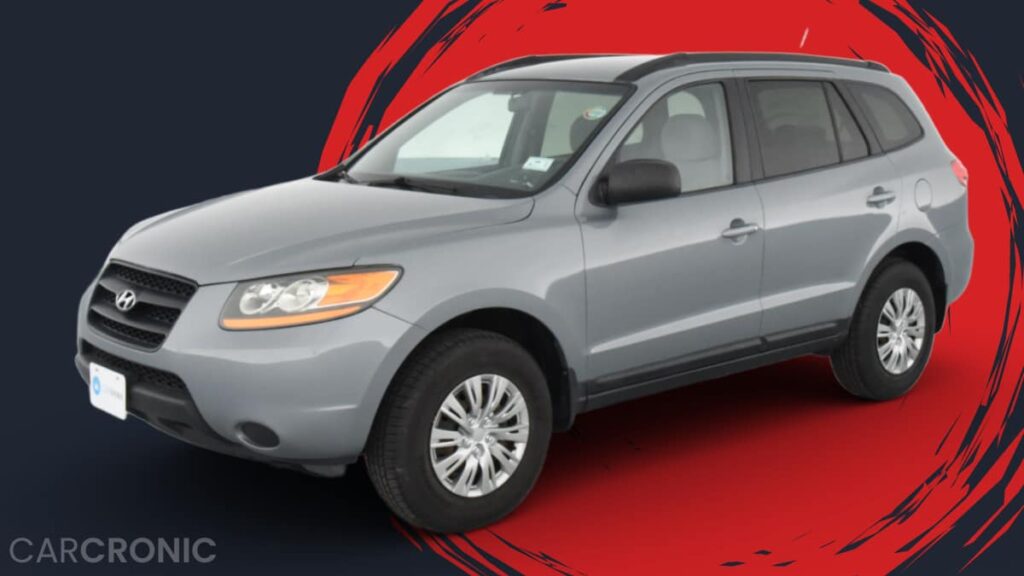
Hyundai Santa Fe Hyundai Santa Fe took an important leap into the second generation of its model, showcasing its brand-new unibody design and noticeable improvements in aesthetics.
The final two year of generation, 2011, 2012 – will be Hyundai Santa Fe’s finest years. Avoiding the 2007 and 2010 models is recommended.
The Best Years: 2011, 2012
Can these Hyundai Santa Fe models of 2011 and 2012 vehicles good? With less recalls and complaints and a good rating from sites such as Consumer Reports, 2011 and 2012 are Hyundai Santa Fe’s most reliable as well as the most stable years of their second generation.
In the past, potential buyers could be enticed by the variety of powertrain options. This included the 2.4L Theta II 4-cylinder engine with 175 horsepower as well as an 3.5L Lambda II V6 engine with a powerful 276 horsepower.
The 2.4L engine boasted a stunning fuel efficiency of 20 city and 28 highway mpg. This is a the perfect balance of efficiency and performance.
Technology-related amenities have also seen an increase with Bluetooth and steering-wheel audio controls and a trial version of SiriusXM satellite radio, which is now available across every trim level, as well as navigation being made available on models with limited features.
Concerning security stability control, front-seat side airbags and full-length curtain airbags, front-active head restraints, as well as hill descent control added an additional level of protection for passengers.
While there were reports of engine stalls, Hyundai acted proactively, recalling models in order to fix wear-related connecting rod bearings, which could cause damage to the engine.
The Worst Years: 2007, 2008, 2009, 2010
Which years should you avoid Hyundai Santa Fe? With numerous complaints from owners and recalls of NHTSA 2007, 2008, 2009 along with 2010 represent these the Hyundai Santa Fe times to stay clear of at all costs.
In 2007, the Hyundai Santa Fe afflicted by a myriad of issues across different systems, with the most notable being the fuel and electrical mechanisms, as well as the brakes as well as the engine.
An important issue was that it was discovered that the gasket for valve covers could let oil leak onto the alternator, which led to failure.
Additionally, the numerous electronic Stability Control (ESC) and fuel sensor issues caused owners to be unhappy and, in a few instances, left trapped.
Hyundai introduced a number of recalls to address the issue of stop lamp switches malfunctioning that caused light bulbs for the ESC defect light to flash and also it was an ABS component short circuit, which created an hazard of fire inside an engine compartment.
In the following years, 2009 and 2008, did not perform as well, with constant issues with the fuel system as well as ongoing problems with the fuel sensor.
The year 2010 Hyundai Santa Fe wasn’t free of transmission problems which included jerking, difficult shifting, and an alarming sound that sounded like a clunking under the car’s hood.
Check out NHTSA for 2007, 2008, 2009, See NHTSA 2007, 2008, 2009, and 2010. Hyundai Santa Fe recalls as well as complaints.
Best & Worst Years for Hyundai Santa Fe 3rd Generation (2013-2018)
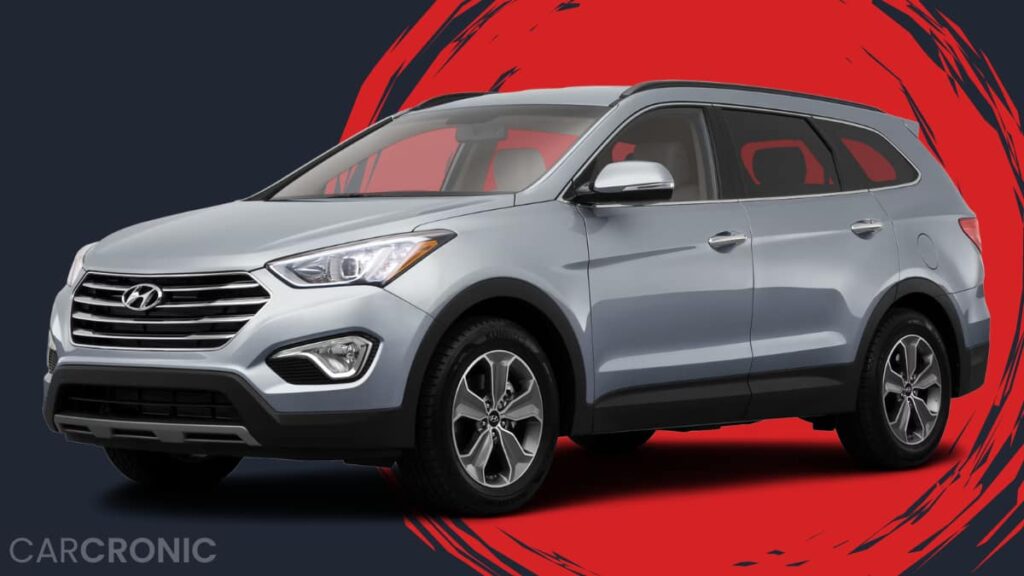
Third generation Hyundai Santa Fe manufactured from 2013 until 2018 has had its fair number of lows and highs. Its sophisticated design.
These instances illustrate the fact that each model year is an individual mix of positives and negatives the vehicle’s generation.
Best Years For Hyundai Santa Fe: 2015, 2016, 2018
Its Hyundai Santa Fe’s 3.3L Lambda II V6 engine has repeatedly impressed both the public and drivers with its astounding performance numbers of 290 hp as well as 252 pounds of torque.
In examining the J.D. Power, VehicleHistory, and Consumer Reports ratings for the vehicle, it’s apparent that some years stand out as the most reliable in regards to overall satisfaction and reliability.
Both the 2016 and 2015 models showed impressive performance from their V6 engines. However, they received mixed feedback from Consumer Reports regarding overall reliability.
This illustrates how even with amazing powertrain specifications other aspects like the quality of construction and durability can have a significant impact on a car’s image.
Hyundai Santa Fe Years to Avoid: 2013, 2014, 2017
When Hyundai Santa Fe entered its third generation, it had to face numerous challenges, which made the years 2013 and 2014 and 2017 particularly challenging.
Although it has been praised for its elegant design and luxurious interior, this year were characterized by some issues with the performance of the vehicle and its reliability.
The model of 2013 was criticized due to its low fuel efficiency and a sluggish ride which slowed down a promising launch. In 2014, complaints were made regarding the car’s handling and transmission problems, which damaged its image further.
While 2017 saw improvements in safety features as well as technology integration, questions about engine performance and general driving experience remained.
These years saw significant setbacks to Hyundai Santa Fe’s 3rd generation even with its improvements in terms of comfort and design. These years highlight the automobile manufacturers’ difficulties in balancing innovation and consistent high-quality to ensure satisfaction of customers.
Best & Worst Years for Hyundai Santa Fe 4th Generation (2019-2023)
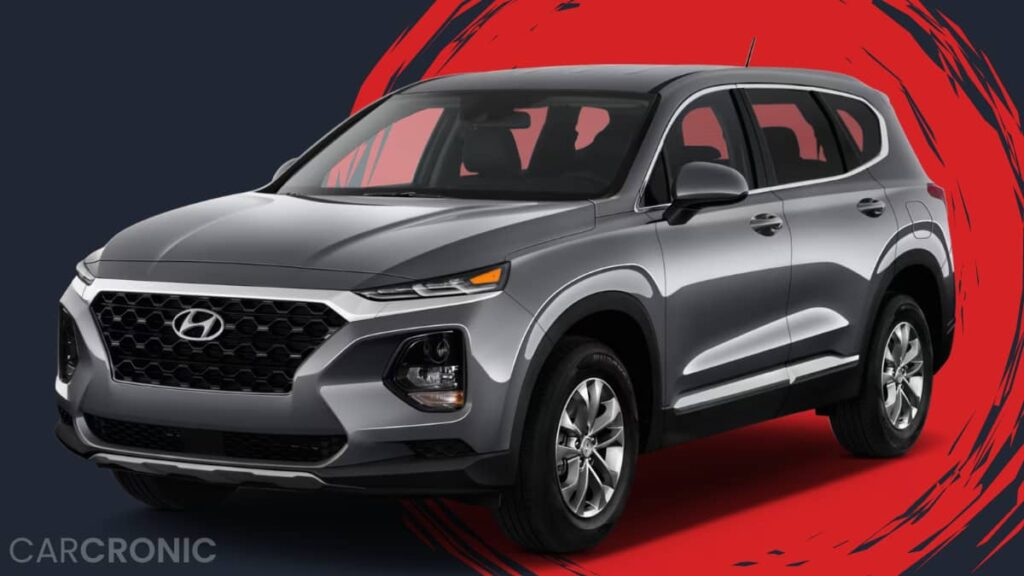
The fourth version of Hyundai Santa Fe is an unforgettable section in the evolution of the model featuring a new design and mechanical overhaul that demonstrates Hyundai’s commitment to modern technological advances in the automotive industry.
In this year’s generation 2019-2021, 2020 along with 2023 will be Hyundai Santa Fe’s most successful years. 2021 and 2022 represent Hyundai Santa Fe years you must avoid.
The Best Years: 2019, 2020, 2023
It is equipped with the most recent technologies and safety equipment, as well as very good ratings from owner platforms such as J.D. Power, Consumer Reports, VehicleHistory and Cars.com 2019, 2020 and 2023 will be Hyundai Santa Fe’s most reliable and most stable years of this model.
In the new 2019 Hyundai Santa Fe, buyers might choose the 2.4L Theta II inline-4 engine that produces 185 horsepower or a stronger 2.0L Smartstream G2.0 turbo-4 engine which produced the equivalent of 235 horsepower, which is mated to an eight-speed auto transmission.
The introduction of safety features such as a forward-collision warning system that includes automatic emergency brakes as well as adaptive cruise control and a attention warning system added an extra layer of security that buyers who are family-oriented loved.
Hyundai Santa Fe in 2020. Hyundai Santa Fe further enhanced the luxury of this trim, such as Calligraphy and the Limited. Limited and Calligraphy with leather seats as well as high-end door sills as well as an Harman Kardon premium audio system.
The Worst Years: 2021, 2022
2021 and 2022 have seen a number of recalls involving domains such as engines and transmissions; hence they are classified as Hyundai Santa Fe year that should be avoided by the 4th generation.
Its 2021 Hyundai Santa Fe was the subject of critical reviews because of the prevalence of engine problems, which pose the risk of safety and reliability.
Many recalls were issued, covering a variety of issues, including the complete motor failure due to malfunctions in the oil pump and fire hazards resulting to leaks of fuel at pipe connections.
Its 2022 Hyundai Santa Fe seemed to take on the same mechanical issues There were reports of problems with engine performance as well as transmission issues, like unstable shifting and insensitive acceleration under certain conditions.
Check out NHTSA 2021, 2022 Hyundai Santa Fe recalls as well as complaints.
Hyundai Santa Fe Average Resale Values
It is the Hyundai Santa Fe has gained interest in the auto market due to its remarkable resale value.

The average resales values for Hyundai Santa Fe models have been consistently high, beating the majority of its rivals in the mid-sized SUV Segment.
Conclusion
The Hyundai Santa Fe has experienced its best and worst Hyundai Santa Fe years Some models have stood out due to their performance and reliability, while others have had issues that are notable.
The models of 2013 and 2017 have been deemed to be among the top times to buy Hyundai Santa Fe due to their excellent safety ratings, spacious interiors and the latest technology features. The models of 2012 and 2016 were criticized for electrical and transmission problems So these can be considered Hyundai Santa Fe Years to be avoided.
FAQ’s: Best & Worst Hyundai Santa Fe Years
Are there any specific Hyundai Santa Fe seasons to steer clear of?
Yes, the 2007 as well as 2012 models have been reported to be more frequently affected.
The year that Hyundai Santa Fe offers the most fuel efficiency?
The hybrid model for 2020 is well-known for its impressive performance in terms of fuel efficiency.



